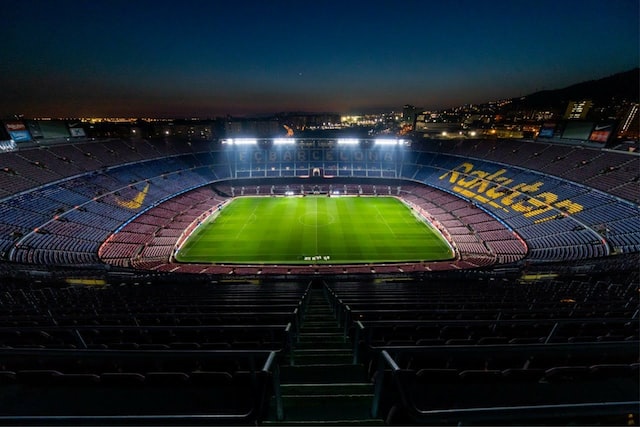Metal halide lights were the standard option for sporting arenas for many years. But things are beginning to shift. Stadiums in today’s world increasingly rely on LED lighting, and for a good reason. For today’s stadiums, switching to LED makes sense in terms of time and energy savings.
Reduced Energy Costs
LED lighting is a greener alternative to traditional fixtures, and stadiums that switch to LEDs can reduce energy costs. Though the initial cost of implementing LEDs in stadiums may be substantial (the average installation cost ranges from $800,000 to $2 million), these costs are typically recouped within 36 months. Another benefit of LED stadium lights is their increased controllability. The reduced energy consumption of LEDs makes stadiums a much more efficient option. Stadiums also save money because LED bulbs last much longer. LEDs also require less maintenance and labor compared to conventional lighting systems. These benefits will increase attendance and boost stadium profits while reducing operating costs will help the stadium close a budget deficit.
Stadium lighting systems are flexible and can be designed to suit individual sports fields. They can be used for competitive games, training matches, and small-sided pick-up games. The light intensity of a sports facility is vital for enhancing the experience for spectators and athletes. In addition, sports require different light levels, such as soccer, tennis, or baseball.
Improved Visibility
Improved visibility is a big benefit of LED lighting systems. LEDs produce an even distribution of color, increasing the visibility of objects and workers. In addition, their low glare and low color temperature ensure better visibility. Another benefit is the higher luminance, which ensures that details are not missed even at low lighting levels.
LEDs can be used in many ways, including in street lighting. They can be dimmed or shut off to reduce energy consumption and CO2 emissions. It not only improves visibility but also lowers energy bills and maintenance costs.
Improved Color Rendering
LED lighting systems are proving to be a highly energy-efficient alternative for stadiums. LED lights also provide better color rendering, which improves player reaction time and alertness. They also improve broadcast quality by eliminating flicker and shadows.
Stadium lighting is an important part of the overall experience for the players and spectators. Without proper lighting, a ball might be hard to see. In addition to creating glare, LEDs also cause visual hotspots. While they may be brighter than traditional stadium fixtures, LEDs must be able to render the ball well. For example, in baseball, pop flies can often go above the light level and become very difficult to see at night.
High-quality stadium lights must also be able to reproduce natural light. High-quality LEDs have a CRI of over 70, which allows the viewer to view colors in a natural, lifelike way. LED lighting systems also need to be protected from wet weather.
Longer Lifespan
While the average lifespan of LED bulbs is around 10,000 hours, this number can be extended to 50,000 hours or more. Using maintenance and life-cycle management techniques, LED lighting systems can have a significantly longer lifespan, thereby significantly increasing their ROI. These tips apply to all types of lighting technologies. It is important to use lamps with high vapor and moisture resistance. In addition, you should avoid placing your light fixtures in places frequently exposed to high vibration and water.
LED lights use capacitors to store energy, and the quality of these capacitors is very important. Those made from plastic may not keep up with an LED’s lifespan, which can shorten its lifespan. On the other hand, Ceramic capacitors are more tolerant of high temperatures and voltage fluctuations. Another vital factor in determining LED light lifespan is the temperature of the bulb case. LED lights will fail to function properly if the case temperature exceeds 85 degrees Celsius. To prolong the life of LED bulbs, heat management techniques should be used to keep temperatures under control.
In laboratory conditions, LED light systems with indicator-type white LEDs produced 80% of their initial light output within a thousand to two thousand hours. This depreciation rate is due to the yellowing of the epoxy material used to make LEDs. However, newer high-power white LEDs have improved lumen maintenance and are, therefore, likely to have a longer lifespan.
Dwayne Kula
Dwayne Kula is the President of LED Lighting Supply. On any given day, Dwayne is writing content for the site and helps manage the marketing initiatives that are ongoing. He has a Software Engineering degree and still dabbles in writing software for the company as needed. When not working, he enjoys spending time with his family, working out, playing the occasional game of golf, and exploring New England.
LinkedIn: https://www.linkedin.com/in/dwaynekula/





